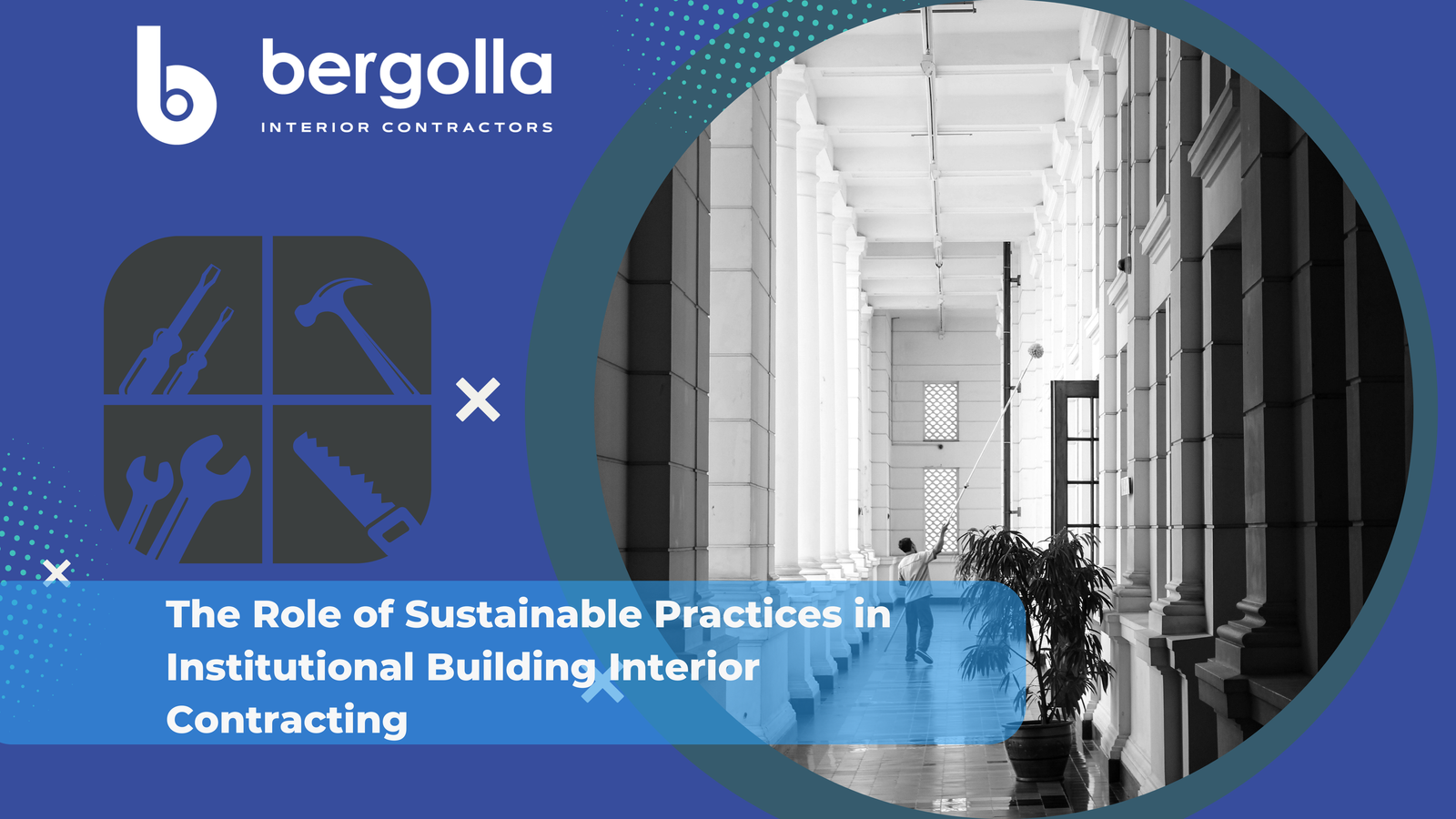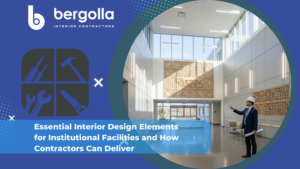Sustainable practices have become an essential component of the construction industry, particularly in institutional building interior contracting. As the world continues to face the challenges of climate change and environmental degradation, industries are being encouraged to adopt more eco-friendly and sustainable solutions. In institutional building interior contracting, the focus is shifting toward creating spaces that are not only functional and aesthetically pleasing but also environmentally responsible. This article explores the role of sustainable practices in interior contracting for institutional buildings and the benefits they bring to both the environment and the occupants.
What is Sustainable Interior Contracting?
Sustainable interior contracting involves integrating environmentally friendly and energy-efficient practices into the design, construction, and renovation of institutional spaces. It focuses on minimizing the ecological impact of construction activities, conserving resources, reducing waste, and creating healthier environments for occupants. Sustainable practices can be incorporated throughout the lifecycle of a building, from initial design and material selection to construction processes and building maintenance.
Key Sustainable Practices in Institutional Building Interior Contracting
1. Use of Eco-Friendly Materials
One of the most impactful sustainable practices in interior contracting is the use of eco-friendly materials. These materials are sourced responsibly, manufactured with minimal environmental impact, and designed to have a longer lifespan. For example, using recycled or rapidly renewable materials such as bamboo, cork, and reclaimed wood can significantly reduce the carbon footprint of a building’s interior. Additionally, non-toxic paints, finishes, and adhesives can improve indoor air quality, benefiting the health and well-being of the building’s occupants.
2. Energy-Efficient Lighting and Fixtures
Energy efficiency is a cornerstone of sustainable interior contracting. By incorporating energy-efficient lighting fixtures, such as LED lights, and installing motion sensors and timers, institutional buildings can significantly reduce their energy consumption. Furthermore, using energy-efficient appliances and HVAC systems helps in maintaining a comfortable indoor environment without wasting energy. These systems are designed to optimize energy use, reducing operational costs and the building’s environmental impact.
3. Smart Building Systems
Incorporating smart building systems is another key sustainable practice that contributes to energy efficiency. Smart technologies can automate lighting, heating, ventilation, and air conditioning systems to adjust based on occupancy and weather conditions. These systems not only reduce energy waste but also enhance the overall comfort and functionality of institutional buildings. By using sensors and advanced control systems, energy consumption can be optimized in real-time, reducing the building’s carbon footprint.
4. Sustainable Waste Management
Sustainable waste management is crucial during the interior contracting phase of institutional buildings. Construction projects typically generate a significant amount of waste, including packaging materials, discarded materials, and construction debris. Sustainable practices, such as recycling and reusing materials, can minimize the amount of waste sent to landfills. For example, using salvaged materials, such as reclaimed wood and steel, can reduce the need for new resources while giving a unique and historical aesthetic to the building’s interior.
5. Indoor Environmental Quality (IEQ)
The health and well-being of the occupants are critical in sustainable interior contracting. Indoor Environmental Quality (IEQ) refers to the conditions within a building that affect the comfort and health of its occupants. Sustainable contracting practices focus on improving air quality, thermal comfort, and lighting quality. Proper ventilation systems, the use of low-emission materials, and natural lighting all contribute to better IEQ. Incorporating biophilic design elements, such as plants, natural wood, and other organic materials, can further enhance the connection between the built environment and nature, improving occupants’ mental and physical health.
6. Green Certifications and Standards
Institutional building projects that prioritize sustainable practices often seek certifications from organizations such as LEED (Leadership in Energy and Environmental Design) or WELL Building Standard. These certifications ensure that the building has met specific sustainability standards, including energy performance, water efficiency, and material sustainability. Achieving a green certification not only helps reduce the environmental impact of a building but also increases its marketability and value.
7. Water Conservation Strategies
Water conservation is a key element in sustainable interior contracting. Installing low-flow fixtures in bathrooms and kitchens, using water-efficient landscaping designs, and employing rainwater harvesting systems are all effective strategies for reducing water usage in institutional buildings. By making these adjustments, buildings can significantly reduce their water consumption and contribute to the preservation of local water resources.
8. Sustainable Renovations and Adaptive Reuse
Instead of demolishing old buildings, sustainable interior contracting often involves renovations and adaptive reuse of existing structures. This approach not only preserves the building’s historical and cultural significance but also reduces the need for new construction, which in turn reduces resource consumption and waste. By reimagining existing spaces and giving them a new purpose, interior contractors contribute to the sustainability of the urban environment.
Benefits of Sustainable Practices in Interior Contracting
Sustainable interior contracting in institutional buildings offers a multitude of benefits. First and foremost, these practices contribute to a reduced environmental footprint, helping combat climate change by lowering carbon emissions, conserving resources, and reducing waste. Additionally, sustainable buildings tend to have lower operating costs due to energy-efficient systems, water-saving fixtures, and long-lasting materials. For institutions, this means lower utility bills and maintenance costs over the building’s lifecycle.
Moreover, creating a healthier and more comfortable environment for building occupants improves productivity, reduces absenteeism, and boosts overall satisfaction. Sustainable interior contracting practices also align with corporate social responsibility (CSR) goals, enhancing the reputation of institutions that prioritize environmental stewardship.
Conclusion
Sustainable practices in institutional building interior contracting are no longer just an option; they are essential for creating buildings that are not only functional and aesthetically pleasing but also environmentally responsible and energy-efficient. By integrating eco-friendly materials, energy-efficient systems, smart technologies, and waste management strategies, institutional buildings can significantly reduce their environmental impact. These practices not only benefit the planet but also improve the health, comfort, and productivity of building occupants, making sustainable interior contracting an investment that pays off in the long run.






